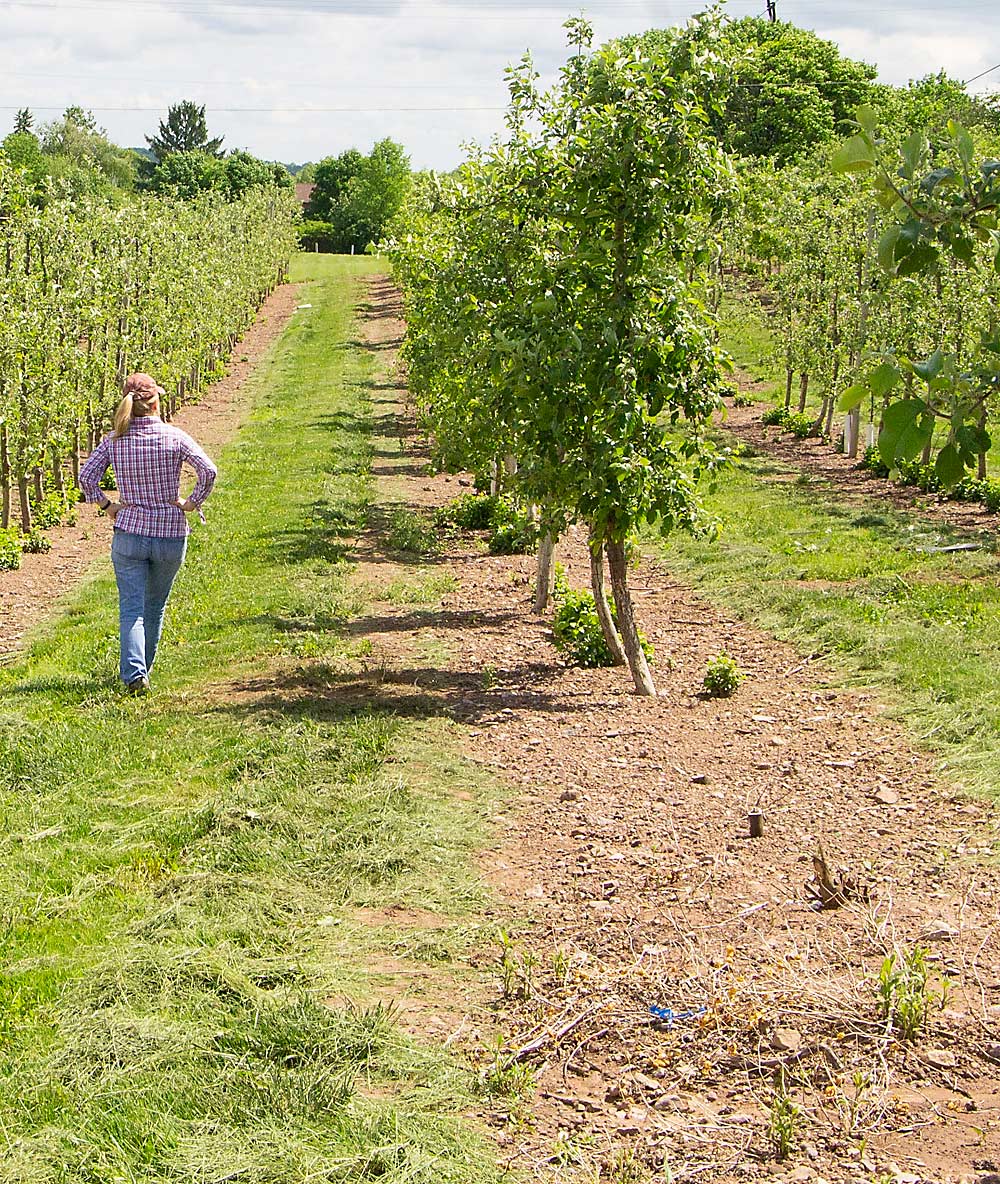
It’s been several years since seemingly healthy young trees began to rapidly decline from a not-yet-understood disorder known as rapid apple decline, including in this research block at Pennsylvania State University’s Fruit Research and Extension Center in Biglerville, Pennsylvania. PSU pathologist Kari Peter, who first described the disorder, says work is moving forward to determine if a newly discovered virus is the culprit, or at least part of the problem.(Kate Prengaman/Good Fruit Grower)
Seemingly healthy young trees turn yellow and suddenly die. There’s decay from the graft union up the trunk, while the roots remain healthy. Several trees in a block will die while neighboring trees remain healthy. Tests for the usual suspects come back negative.
Five years after Penn State University pathologist Kari Peter first documented the phenomenon called rapid apple decline (RAD) in her research orchards and in those of nearby growers, she’s now embarking on a study to see if a newly discovered virus is responsible.
“In order to prove pathogenicity, you need to have trees with only the virus and see if it produces the symptoms,” Peter said. She has 200 such trees now, grafted this winter by Adams County Nursery in Aspers, Pennsylvania, with infected Golden Delicious and Fuji budwood, ready to watch for signs of distress. “We still don’t know if (the virus) is endemic and the disorder is caused by other tree stressors.”
Meanwhile, reports of the disorder continue to come in, often of young trees on Malling 9 rootstock, but not always.
“One grower has lost 20 percent of his orchard,” Peter said. “He’s losing trees every year.”
Other suspected RAD cases have ended up being attributed to other causes, such as root rot and root blight. It’s possible, since the symptoms are similar to fire blight, that the disorder is not new but just newly noticed.
Researchers in New York began investigating whether ambrosia beetles are a vector, causing the decline, but Penn State entomologist Greg Krawczyk thinks the beetles are simply attracted to the ethylene emitted by the already sick, stressed trees and are coming as a result of the disorder, not causing it, Peter said.
But she’s not ready to rule it out entirely, either — as the disorder may well be the result of a confluence of tree stress factors.

Penn State pathologist Kari Peter surveys one of her research blocks for new signs of rapid apple decline in May 2018. The disorder causes seemingly healthy young trees to completely collapse in the course of a few weeks. (Kate Prengaman/Good Fruit Grower)
“I’ve seen places where the trees have the virus, but they look totally fine,” she said. “So, it might be more complicated than just a pathogen or an insect.”
To that end, she’s teamed up with Krawczyk, other entomologists and horticulturists in the region, in addition to the research pathologists currently involved in the hunt for the virus, to ensure the disorder is being studied from all angles.
The State Horticultural Association of Pennsylvania has supported research so far, but Peter is applying for federal grants as well, to expand the research effort — and soon.
“I’m worried that since last year was so stressful, I hope I’m proven wrong, but I think we are going to see another wave,” she said. •
—by Kate Prengaman
Related: What’s killing these trees?






Leave A Comment